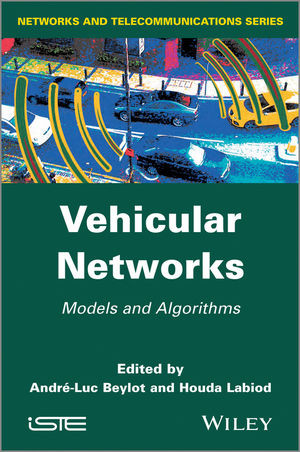

Most ebook files are in PDF format, so you can easily read them using various software such as Foxit Reader or directly on the Google Chrome browser.
Some ebook files are released by publishers in other formats such as .awz, .mobi, .epub, .fb2, etc. You may need to install specific software to read these formats on mobile/PC, such as Calibre.
Please read the tutorial at this link: https://ebookbell.com/faq
We offer FREE conversion to the popular formats you request; however, this may take some time. Therefore, right after payment, please email us, and we will try to provide the service as quickly as possible.
For some exceptional file formats or broken links (if any), please refrain from opening any disputes. Instead, email us first, and we will try to assist within a maximum of 6 hours.
EbookBell Team

4.8
94 reviewsOver the last few years vehicular networks have been receiving a lot of attention from academia, industry, standardization bodies, and the various transportation agencies and departments of many governments around the world. It is envisaged in the next decade that the Intelligent Transportation System (ITS) will become an essential part of our daily life.
This book describes models and/or algorithms designed to investigate evolutionary solutions to overcome important issues such as congestion control, routing, clustering, inter-connection with long-term evolution (LTE) and LTE advanced cellular networks, traffic signal control and analysis of performances through simulation tools and the generation of vehicular mobility traces for network simulations.
It provides an up-to-date progress report on the most significant contributions carried out by the specialized research community in the various fields concerned, in terms of models and algorithms. The proposals and new directions explored by the authors are highly original, and a rather descriptive method has been chosen, which aims at drawing up complete states of the art as well as providing an overall presentation of the personal contributions brought by the authors and clearly illustrating the advantages and limitations as well as issues for future work.
Contents
1. Introduction
2. Congestion Control for Safety Vehicular Ad-Hoc Networks
3. Inter-Vehicle Communication for the Next Generation of Intelligent Transport System: Trends in Geographic Ad Hoc Routing Techniques
4. CONVOY: A New Cluster-Based Routing Protocol for Vehicular Networks
5. Complementarity between Vehicular Networks and LTE Networks
6. Gateway Selection Algorithms in a Hybrid VANET-LTE Advanced Network
7. Synthetic Mobility Traces for Vehicular Networking
8. Traffic Signal Control Systems and Car-to-Car Communications